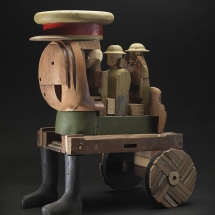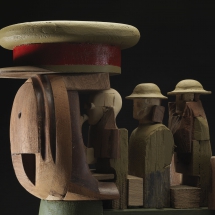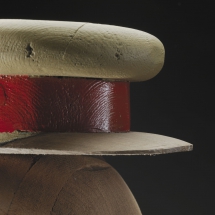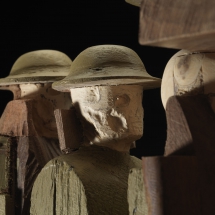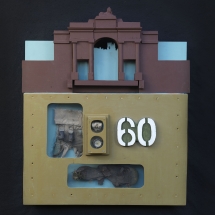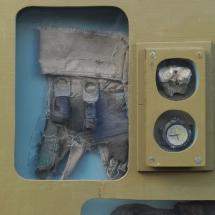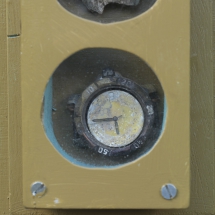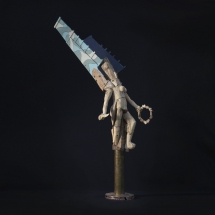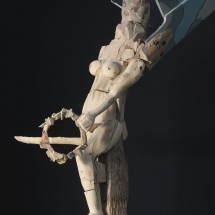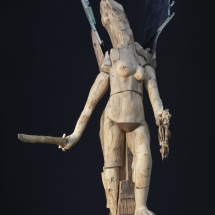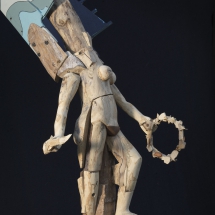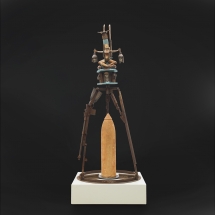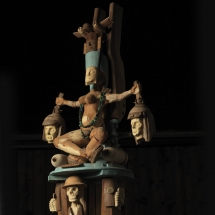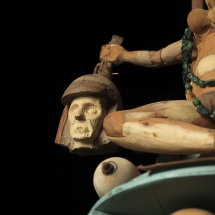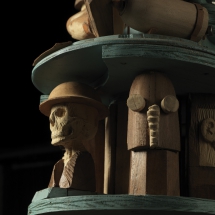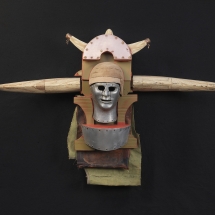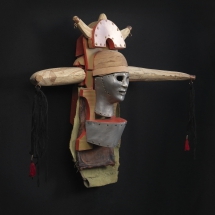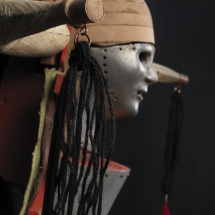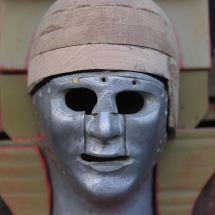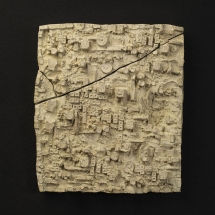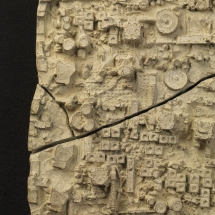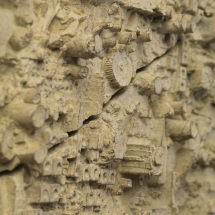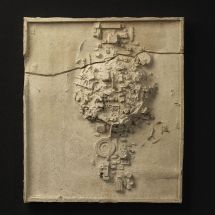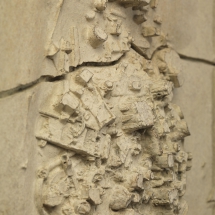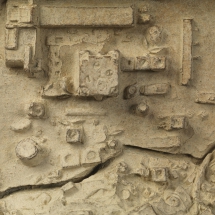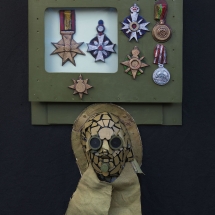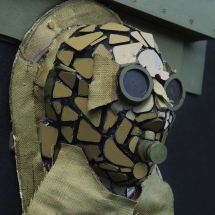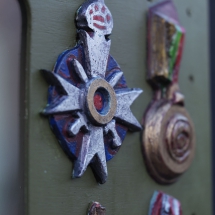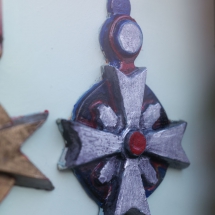50 Year Restrospective
Flanders Fields Museum, Ypres, Belgium – 2013
An Extract from a letter written in Flanders to friends in London:
“For me this has been the most amazing year and all thanks to the staff of the IFF Museum Ieper/Ypres. I am sure that I must have told you that I was offered the position of artist in residence after the Trench Art Conference in 2009. The Museum rented an extraordinary house for a fortnight – on Guido Gezelpleine close to the Ramparts and Menin Gate. Sylvie remarked that the restorers, when they rebuilt the city, put back all the disadvantages as well as the picturesque features. I spent my days walking and making topographical drawings around the Salient (Westhoek) and Sylvie and I made expeditions to such places as Plugstreet Wood (where I found the wreckage of a GS Wagon covered in brambles) and North to Dixmude and the cemetery with the superb and moving Kathe Kolwitz sculpture of the grieving parents, close to the spot where her son is buried. I liked the funny little house, that had been a shop. There was a large empty room, which I turned into my own temporary museum. Everyone we met was so friendly that Sylvie grew to like Ypres which, at the beginning of the project she found morbid (the mass of cemeteries) and irritating (the war-tourist tat on sale in many shops in the Grootmarkt)
In all the project lasted four and a half years. During that time I visited Ypres two or three times a year, usually by Eurostar but with the car if Sylvie was coming with me. I drew in and around Ieper and then made objects in response to the Museum and Westhoek (The Ypres Salient) back in my studio. These I called War Toys, basing the series on objects that I made as a child during the war.
The archaeologist Nick Saunders is kind enough to refer to my sculpture as Trench Art. I don’t view it like that but I did allow myself one piece of Trench Art and that was the base of the figure of Eriskegal which I mounted on a large shell case that I bought from Patric Indevuyst at the Shell Hole. Patric is an eccentric and opens when he feels like it but he has now become a friend and technical adviser. He has an amazing fund of knowledge about anything that comes out of the ground in Flanders.
If you know ‘The Epic of Gilgamesh’ then you will recognise Eriskegal and Ishtar as two sisters who detest each other. Ishtar was the Assyrian Goddess of Sex and War – not a nice polite young lady. Ishtar is one of the largest of the new sculptures. She is carved out of wood but she is mounted on a steel tripod that I faked to look like the sort of trench furniture that farmers find all over the Salient. (Deceauville rail-track, that sort of thing, plus a faked Light Machine Gun that I welded up out of scrap and rusted artificially). A collector in Ypres gave his definition of a fake – that which is made to deceive. This was not intended to deceive anyone but some did assume that it was real.
At the base of Ishtar’s tripod I placed an Eight Inch shell that I borrowed from the Museum store. Piet Chielens did not think it looked big enough so he went off to the store and returned with a monstrous piece of metal on a sack truck. He was grinning all over his face. The shell fitted perfectly onto the bottom circle of the tripod.
Carting the sculpture over to Belgium and back again three months later were major operations but the IFF Museum staff handled that efficiently too. A very large lorry arrived from Brugge with an eccentric driver who had two jokes in English, one in which he pretended to be a small dog and begged for biscuits.
The retrospective was an amazing piece of luck, but, as if this was not enough, as a result, the owners of the Pangolin sculpture foundry offered me a one man show in their gallery in Kings Place, Pangolin London. Kings Place, as I am sure you know, is the rotunda beside the canal that houses two galleries, two concert halls and the offices of The Guardian. It is part of the huge arts complex that is now being completed. It includes several galleries and the former Central/St Martins schools of art”.
2012
Painted Wood
Unique
51 cm high, 44 cm wide
2013
Painted wood & found objects
Unique
86 cm high
2012-2013
Wood on shell case
Unique
145 cm high
2011-2013
Painted wood & steel
Unique
260 cm high
(NAGA HEAD)
2011
Painted Wood, Copper,
Aluminium, Canvas & String
Unique
71 cm high, 122 cm wide
2000
Bronze
Edition of 6
40 cm high
2000
Bronze
Edition of 6
46 cm high
2013
Painted wood, Canvas &
Archaeological Finds
Unique
95 cm high, 65 cm wide
